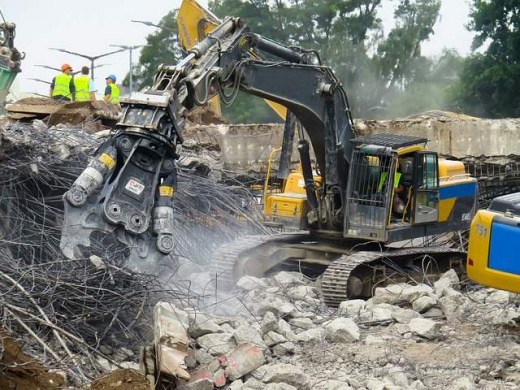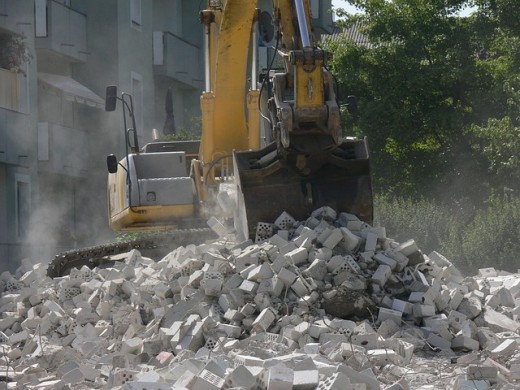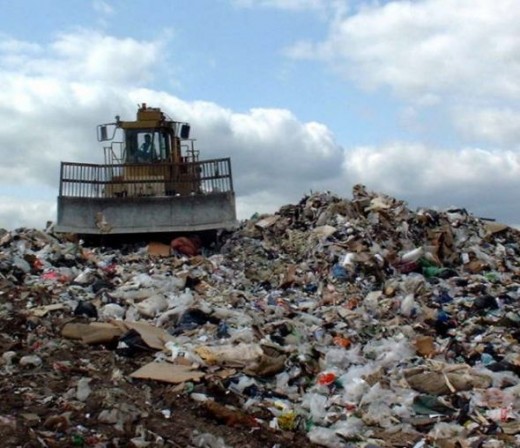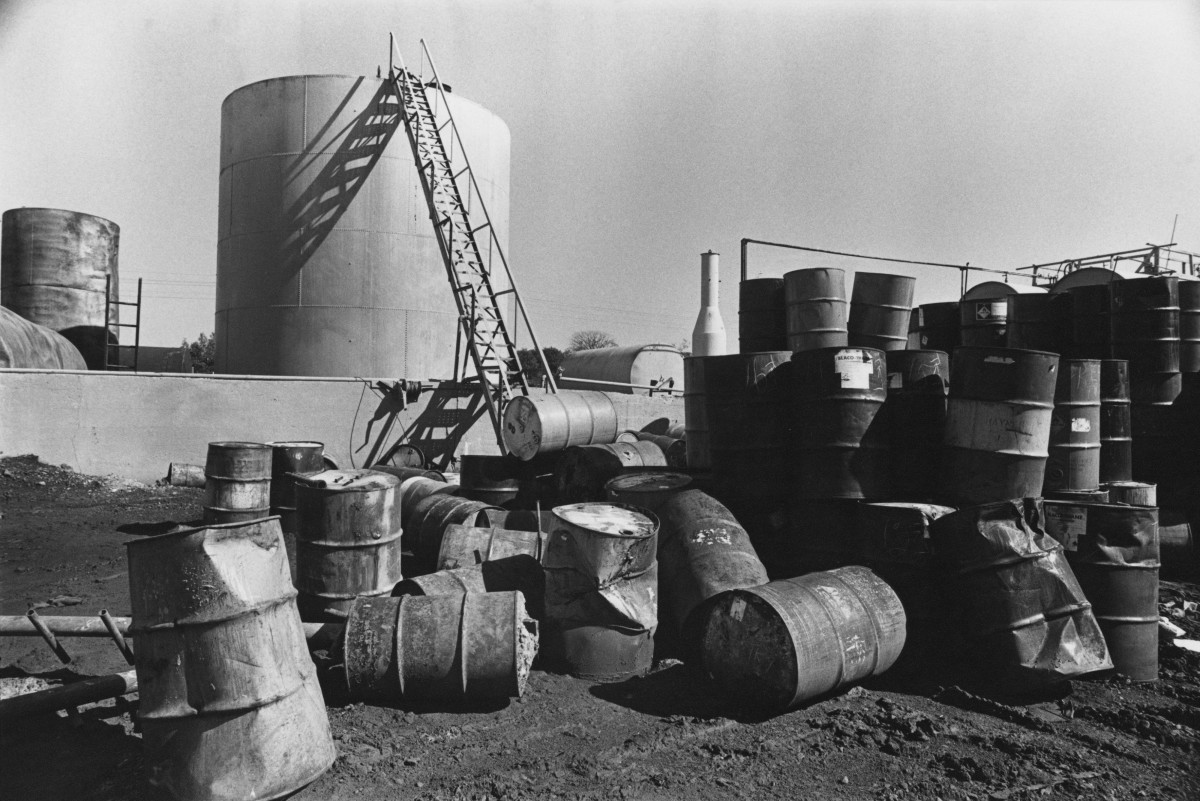Site Waste Management Plans

Site Waste Management Plans and What UK Construction Contractors Need to Know
Here is your summary of the requirements for United Kingdom Site Waste Management Plans (SWMPS) as from their date of introduction.
In 2013 the regulations described in this page were repealed by the UK government.
However, most clients still require them, and they have been instrumental in reducing construction waste, and the cost of dealing with it.
The requirements were made far too complicated by the regulations, and the great advantage of removing these regulations from the formal statute has been to introduce flexibility and innovation in the manner in which these plans can be drawn up. Now using various aids, they can be drawn-up, quickly and cheaply to the benefit of the construction industry, their clients, and the environment.
When applied with common sense they have been reported to, save money in most instances by focusing attention on the waste management aspects of the project from an early stage in each project.
Watch this BEFORE you read on: Site Waste Management Plan Update 2014

SWMPs Explained Below
Cut Waste, Cut Cost!
The following was written and published in 2009. Since then the SWMP Regulations have been repealed, so they are no longer in force. That does not mean that the article which follows for the rest of this page is no longer useful. In fact, most contractors on sizable large projects still apply these or similar rules, because they make good business sense.
Although, the SWMP Regulations were removed from the law, the Construction, Design and Management (CDM) Regulations are still very much in force, but have been updated twice since this was first written. Readers must refer to the latest version of the CDM Regulations, in force and current, when they read this.
From the 6th April 2008 all construction projects in England costing more than £300,000 (excluding VAT) will require a site waste management plan (SWMP). The idea of this is that with a site waste management plan written at the design stage of a construction project, there will be time to ensure that greater attention will be given to reuse of expected waste materials on site the level of and where this is not possible uses other than landfilling will be promoted.
A more sustainable waste management strategy for each and every construction project will require changes to the way waste considerations are prioritised and managed and the SWMP strategy is also based on the principles of sustainable waste management.
For any project with a cost greater than £500,000, the plan must be further reviewed throughout the project, not less than every six months to reflect the progress of the project and record actual measures taken. So the client would not be able to discharge any of his responsibilities to the principal contractor and the principal contractor would also be responsible for what happens on site. The definitions of client and principal contractor were originally based on the Construction, Design and Management Regulations 2007, which are now superseded by the Construction, Design and Management Regulations 2015.
Within CDM rules, a client also has a duty to give reasonable directions to any contractor to enable the principal contractor to comply with the regulations. If the client fails to appoint a principal contractor the client will be responsible for all of the principal contractor obligations contained in the regulations.
SWMP Update 2019
At the moment in the UK there is good progress on diversion of waste away from landfill. However, there are a number of constraints to further major increases in recycling and composting. The most significant of these is the difficult market conditions that currently prevail and the depressing effect which further recyclables would have on this.
Companies in the virgin group have been trying out the use of SWMPs. Over the last 12 months many of the waste companies in the UK have worked closely with the UK government small business help site, Envirowise.
Envirowise have completed reviews of their operations and written reports summarizing their findings. Each report has included an action plan, prioritising actions that will minimize waste and reduce energy consumption.
If plans for managing all types of waste including household, commercial and industrial, inert construction and demolition waste and hazardous waste are considered inadequate we presume that there may be restrictions applied.
The site waste management plan needs to be written at the design stage of a construction project; therefore allowing the fullest reuse of expected waste materials on site to be promoted.
Historic CDM Regulations (Repealed) and the SWMP
Similar in operation to the CDM Regulations, the SWMP Regulations impose statutory obligations on clients and principal contractors (but not designers) for the identification, and management of waste from construction sites. These obligations include re-use, recycling, recovery and disposal of waste materials generated.
The SWMP Regulations were intended to be self-regulated, although both the Local Authorities and Environment Agency had powers to enforce through the issue of fixed penalty notices or prosecution.
Additionally, Site waste management plans were to integrate effectively with existing business planning and project management practices, adding value for little extra effort. In reality, however, some effort was needed to align the requirements of Site Waste Management Plans with day-to-day practices.
The savings hoped for were achieved and drove made this regulation unnecessary.
Ideally, you should draft your Site Waste Management Plan at the pre-planning stage of a project in Easy Steps.
It is important to bring the philosophy in this early in each project, to allow big changes. The designer/contractors gain the best benefits while still able to extend the plan to raise the sustainability of the design, by materials reuse and recycling.
SWMP News: Good Site Waste Management Practices
Site Waste Recycling Given Environmental Award for A52 Nottinghamshire Contract
Innovation & Research Focus Issue 7, 4 AUGUST 2008
Work by the Highways Agency to reconstruct part of the A52 has won an environmental award for its innovative use of recycled material and the resulting reduction in CO2 emissions. The scheme has been selected as joint winner in the environmental section of Alfred McAlpine's Corporate Responsibility Awards. The designer was AMScott, with technical input from Tarmac and Scott Wilson Pavement Engineers, the Agency's contractor based in Mansfield. The safety improvement Works for which the pavement recycling won the award was for work which took place last autumn and involved reconstructing both the east and westbound carriageways of the A52 at Radcliffe-on-Trent in Nottinghamshire.
Nick Lowe, Project Manager at AMScott, says that the use of a cold recycled base material allowed the existing hazardous coal tar material, which had been identified within the lower layers of the pavement, to be recycled back into the new pavement construction. This was done without the need for expensive treatment and removal to landfill.
Re-using these materials on site reduced the amount of raw materials which needed processing for production of the new highway pavement and transporting to the site.
Cost savings were achieved of about 40%.
Overall the method used offered substantial environmental benefits. Cold recycling contributes to a reduction in energy, fuel and material consumption. The lower mixing temperatures reduce the energy needed to produce these materials compared to conventional hot bituminous materials. The plant for re-cycling was sited within 5 miles of the site thus reducing the journey lengths & time for haulage vehicles. The reduction of HGV movements in transporting raw materials and waste also meant that CO2 emissions were far less than traditional pavement construction techniques.
Facts About Current Construction Wastefulness
Some interesting facts about current construction wastefulness have emerged.
For example, it is estimated that something like 13% of materials delivered to site are not even used. This material goes straight into skips for disposal!
Furthermore, about one fifth of all fly-tipped waste is construction and demolition waste.
If there is a shortage of space on a construction site, and not enough room for multiple skips to be placed on site, it will be necessary to get a licensed waste management company to deal with waste.
They may be able to recover recyclate materials from most projects and the recommendation is to get a waste company to remove the part-segregated, part mixed site waste and sort all mixed skips, at their depot, for re-use and recycling.
The initial four waste streams considered in early studies have now been extended to six, in order to include hazardous waste and aerosol cans. In some cases, due to site constraints, waste cannot be segregated on-site and is transported to a transfer station.
Visit the UK NetRegs site where there is a section on waste, what it is, relevant legislation, and duty of care for businesses. The client must also ensure all those involved in the project act in accordance with the plan and current waste legislation.
In addition, with environmental legislation on the increase, construction companies will need to be sure that they will be compliant with any changed contractual requirements going forward.
Successful Plasterboard Recycling Makes Difference to Landfilled Quantity
SWMPS seem to be making a big improvement to construction waste management methods
Plasterboard recycling making excellent progress, WRAP reveals
Source: WRAP (the Waste & Resources Action Programme)
Published Sep. 24, 2008
Excellent progress has been made by the UK plasterboard manufacturers in recycling waste plasterboard and significantly reducing the amount sent to landfill in the first year of the industry’s voluntary Ashdown Agreement, says WRAP (Waste & Resources Action Programme) in a new report released today. Between April 2007 and March 2008 nearly 54,000 tonnes of plasterboard waste from construction was recycled back into new plasterboard. Manufacturers have also reduced the waste sent to landfill from their production operations to only 6,000 tonnes.
The Ashdown Agreement was signed in March 2007 between the Gypsum Products Development Association (GPDA) representing the UK plasterboard manufacturers, and WRAP. The Agreement set two challenging and quantifiable targets:
to reduce the amount of waste sent to landfill from manufacturing operations in Great Britain to 10,000 tonnes per year by 2010; and to increase the take back and recycling of plasterboard waste, for use in plasterboard manufacture, to 50% of new construction waste arisings (currently estimated at 300,000 tonnes) by 2010.
Additionally, the Agreement called for the plasterboard manufacturers to work together with the construction sector towards reducing the amount of new plasterboard waste going to landfill. The ultimate long-term objective for WRAP and the GDPA is for zero plasterboard waste to be sent to landfill.
As a result of the landfill disposal target for 2010 being met in year one, the target to reduce the amount of manufacturing waste sent to landfill has been tightened from 10,000 to 7,500 tonnes per year by 2010. Continuing to meet this revised annual target will be challenging but achievable according to the manufacturers.
Welcoming the significant progress, GPDA General Secretary Crispin Dunn-Meynell says hitting one of the 2010 targets in the first year is an important achievement. But he warns that continued improvement remains a challenge.
They Will Halve Construction Waste by 2012 - Pledge Major UK Contractors

Published: 17 October 2008 10:19 Author: John McKenna
Government has a 2012 target of halving construction waste to landfill
Several of the industry's leading contractors yesterday signed up to a Government-backed initiative to halve the amount of construction waste sent to landfill by 2012.
Bovis Lend Lease, Laing O'Rourke and Stanhope were among the clients, contractors and waste firms to sign up to the Waste and Resources Action Plan's (WRAP) Construction Commitments: Halving Waste to Landfill scheme, launched in Westminster on Thursday evening.
The voluntary agreement calls on all parties in the supply chain to publicly state their own chosen waste reduction targets, with the aim that overall the industry will achieve the Government's ambitious 2012 target of halving construction waste to landfill.
Bovis Lend Lease aims to cut the amount of construction waste it sends to landfill by 70% by 2010. Speaking at the launch yesterday Bovis chief operating officer Nick Pollard said: "Construction waste for us is unacceptable because it represents a bad out come for our business. It is symptomatic of poor engineering, over-ordering, poor storage and not least poor design; all impacting on the bottom line for us and our clients. Given the current economic climate, it's something that commercially we can't afford to ignore."
As well as Bovis, Laing O'Rourke and Stanhope, other bodies that supported the agreement's launch included Defence Estates, Berkeley Group, SEGRO and Willmott Dixon.
After the launch, more firms signed up immediately, including French contractor Vinci.
Strategic Forum for Construction chairman Nick Raynsford MP, also speaking at the agreement's launch, warned that it was not enough for only the big names in construction to be aware of the need to cut construction waste, 25M tonnes of which is sent to landfill every year.
"This industry is vast and reaching white van man is an important task," said Raynsford. "If we just get the message to the leaders then everything we are aiming for will not be achieved."
More at www.nce.co.uk/environment
New United Kingdom Demolition Protocol Reinforces Aims of SWMP Regs.
Now Fully Compliant with SWMP Reg UK ICE Publish New 2008 Demolition Protocol
The 2008 Demolition Protocol has been developed to provide an overarching framework which enables the waste hierarchy to inform approaches for managing buildings and structures at the end of their lives.
There is more emphasis on the need to assess the reuse of buildings, structures, elements and products prior to demolition and recycling activities, recognising the carbon benefits of doing so.
The 2008 Protocol [November 2015 Update: This Protocol is no longer available. We suggest the following publication instead: Overview of Demolition Waste in the UK]
This content is accurate and true to the best of the author’s knowledge and is not meant to substitute for formal and individualized advice from a qualified professional.
© 2008 Stephen Last






